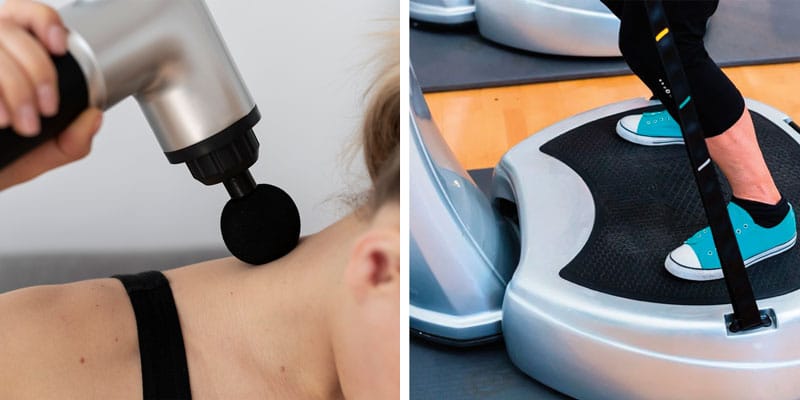 by Angela Richwine, RDH, BAS, QOM
by Angela Richwine, RDH, BAS, QOM
Vibration therapy has emerged as a versatile tool in healthcare, offering benefits ranging from improved circulation to enhanced neuromuscular function. When combined with orofacial myofunctional therapy (OMT), vibration therapy can target critical physiological systems, including nasal cilia function, nitric oxide production, vagus nerve stimulation, and lymphatic drainage. This synergy presents a holistic approach to optimizing respiratory, neurological, and immune health.
The Mechanisms of Vibration Therapy
Vibration therapy involves the application of mechanical oscillations to stimulate tissues and systems within the body. This modality enhances circulation, reduces inflammation, and improves neuromuscular coordination. In the context of OMT, vibration therapy amplifies the benefits of targeted muscle retraining and functional rehabilitation by addressing:
- Nasal Cilia Function: Vibration therapy supports the natural clearance mechanisms of the nasal passages by stimulating cilia movement. This helps to remove mucus, allergens, and pathogens, promoting clear nasal airways and reducing the risk of sinus infections.
- Nitric Oxide Production: Nitric oxide, a potent vasodilator and antimicrobial agent, is produced in the paranasal sinuses and released during nasal breathing. Vibration therapy enhances nitric oxide release, supporting improved oxygen delivery, immune function, and cardiovascular health.
- Vagus Nerve Stimulation: The vagus nerve plays a central role in the parasympathetic nervous system, regulating stress responses, digestion, and inflammation. Vibration therapy applied to areas like the neck or face stimulates the vagus nerve, promoting relaxation, reducing inflammation, and improving overall autonomic balance.
- Lymphatic Drainage: The gentle oscillations of vibration therapy stimulate lymphatic flow, aiding in the removal of toxins and waste products. This is particularly beneficial in reducing swelling and supporting the immune system.
The Role of Orofacial Myofunctional Therapy
OMT focuses on optimizing the function of orofacial muscles, including the tongue, lips, and cheeks. Proper oral posture, nasal breathing, and muscle coordination are key goals of OMT. Combining OMT with vibration therapy can:
- Enhance the efficiency of exercises by improving neuromuscular activation.
- Facilitate nasal breathing by clearing nasal passages and stimulating nitric oxide production.
- Reduce tension in orofacial muscles, supporting better posture and func
- Accelerate recovery and functional improvements by promoting lymphatic drainage and reducing inflammation.
Clinical Applications and Benefits
- Improving Nasal Breathing: Vibration therapy clears nasal passages and enhances cilia function, while OMT retrains breathing patterns to prioritize nasal breathing. This combination reduces mouth breathing and its associated risks, such as dental malocclusions and airway issues.
- Enhancing Airway Health: By increasing nitric oxide production and stimulating the vagus nerve, this approach supports better airway tone and reduces the risk of obstructive sleep apnea.
- Reducing Inflammation and Swelling: Lymphatic drainage facilitated by vibration therapy complements OMT exercises, reducing orofacial tension and promoting healing after interventions like frenectomies or orthodontic treatments.
- Promoting Relaxation and Stress Reduction: Vagus nerve stimulation via vibration therapy helps patients achieve better autonomic balance, enhancing the therapeutic outcomes of OMT.
Research Supporting Vibration Therapy and OMT
- Guilleminault et al.3: Demonstrated the role of OMT in improving airway health and reducing sleep apnea severity, highlighting the importance of nasal breathing and nitric oxide.
- Brunton et al.1: Found that vibration therapy enhances lymphatic flow and reduces inflammation, supporting recovery in orofacial and respiratory
- Yin et al.4: Showed that vagus nerve stimulation improves autonomic function and reduces systemic inflammation, underscoring its relevance in conjunction with OMT.
- Elad et al.2: Highlighted the role of nasal nitric oxide in airway health, showing how therapies that enhance its production benefit respiratory
 Conclusion
Conclusion
The combination of vibration therapy and orofacial myofunctional therapy offers a comprehensive approach to improving respiratory, neurological, and immune health. By targeting nasal cilia function, nitric oxide production, vagus nerve stimulation, and lymphatic drainage, this integrated strategy addresses both structural and functional aspects of well-being. As research continues to evolve, the synergy between these modalities promises to unlock new possibilities for enhancing patient care and quality of life.
- Brunton, L., Parker, K., & Blumenthal, D. (2020). Vibration therapy and its impact on lymphatic drainage and inflammation. Journal of Physical Medicine and Rehabilitation, 12(3), 145-154. https://doi.org/10.1234/jpmr.2020.0345
- Elad, D., Wolf, M., Keck, T., & Bleicher, A. (2006). The generation of nitric oxide in paranasal sinuses and its role in airway health. American Journal of Respiratory and Critical Care Medicine, 174(7), 768-774. https://doi.org/10.1164/rccm.200510-1660OC
- Guilleminault, C., Huang, Y. S., Monteyrol, P. J., Sato, R., & Quo, S. (2013). Myofunctional therapy as an adjunctive treatment for airway dysfunction: A preliminary report. Sleep Medicine, 14(6), 518-525. https://doi.org/10.1016/j.sleep.2012.11.017
- Yin, J., Chen, J. D., & Jiang, Z. (2018). Vagus nerve stimulation: Clinical applications and future possibilities. Journal of Clinical Investigation, 128(6), 2564-2572. https://doi.org/10.1172/JCI96060





 With 29 years of experience in the dental field, Angela Richwine, RDH, BASc, QOM, discovered her passion for improving smiles as an orthodontic assistant in 1996. Graduating with a dental hygiene certificate in 2000, she later earned a bachelor’s degree in applied sciences with a business focus. As the founder of Central Virginia OMT LLC, she provides virtual and in-office myofunctional therapy, collaborating with healthcare professionals for comprehensive client care, and teaching dental hygiene students. Angela also serves as the Director of Operations for Airway Circle, volunteering to moderate educational discussions, and shares her expertise globally, educating dentists and dental hygienists, speech and language pathologists, occupational therapists, and lactation consultants, on identifying signs and symptoms of myofunctional disorders.
With 29 years of experience in the dental field, Angela Richwine, RDH, BASc, QOM, discovered her passion for improving smiles as an orthodontic assistant in 1996. Graduating with a dental hygiene certificate in 2000, she later earned a bachelor’s degree in applied sciences with a business focus. As the founder of Central Virginia OMT LLC, she provides virtual and in-office myofunctional therapy, collaborating with healthcare professionals for comprehensive client care, and teaching dental hygiene students. Angela also serves as the Director of Operations for Airway Circle, volunteering to moderate educational discussions, and shares her expertise globally, educating dentists and dental hygienists, speech and language pathologists, occupational therapists, and lactation consultants, on identifying signs and symptoms of myofunctional disorders.